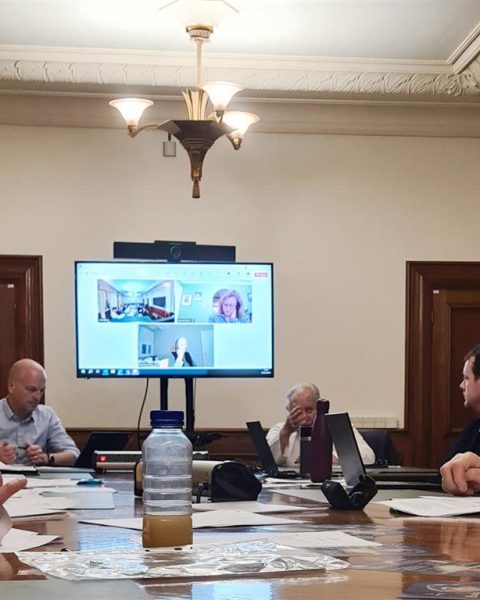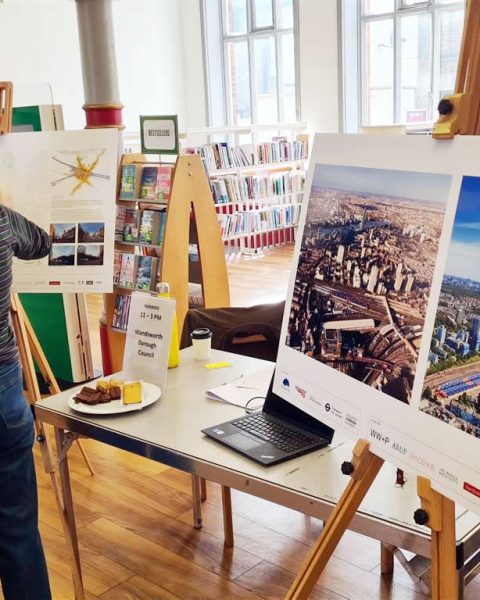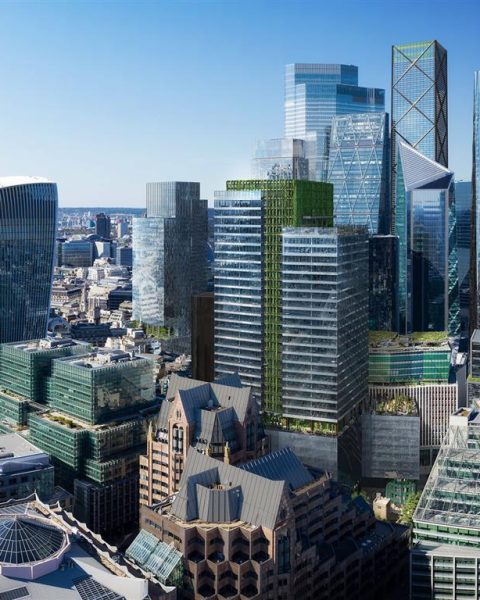Author: Cyril Richert
Last month I was asking you to comment our draft proposal regarding Wandsworth Borough Council policy on tall buildings. After merging all contributions and with the help of the Wandsworth Society, the Putney Society and the Battersea Society we have submitted a joint statement to the inspector in charge of reviewing the LDF for Wandsworth.
In our cover letter addressed on the 3rd September to the Inspector by the Chairman of the Wandsworth Society on the behalf of the Putney, Wandsworth and Battersea Amenity Societies and the Clapham Junction Action Group (together representing the northern half of the borough), we said:
In view the revised submission which you are seeking from the Council on the above policy by the 4th September, we attach a brief report compiled by our four groups for your consideration. This is a very important issue both for the Borough and London generally as the ramifications of Wandsworth Council’s ‘tall’ buildings policy will have far reaching repercussions across South and West London in particular.
We suggest that, because it is an important and contentious issue, the Council should go out for a further round on consultation on tall buildings. Accepting that this is a matter for the Inspector’s judgment, we would like to present this submission. We did not present it at the time of publication because these issues were not so apparent then. However, as the result of a number of highly contentious planning applications in the Borough this is no longer the case. The issues are now most apparent and of concern to many, and we would request to be heard at the public inquiry, whenever that is held, for the same reasons.
You can read the full statement HERE.
A synopsis of our views:
“Tall” buildings, those significantly taller than their neighbourhood, must be considered in their urban context. Proposals for such buildings should not simply attempt to show that they do not harm matters their surroundings but that they contribute positively to the character, appearance and quality of their immediate surroundings and the wider area they will affect.
“Tall” buildings must stand up to scrutiny in terms of need, appropriate location, architectural quality in their own right and their contribution to urban design.
Wandsworth Borough is neither a city nor a commercial centre (apart from a small fringe in the Central Activities Zone) but largely urban and residential.
We identify the following policy constraints by which Planning Permission for “tall” buildings would be refused for breach of any of them:
- TB1 Conservation Areas where historic environmental considerations and character are of significance
- TB2 Buffer zones to Conservation Areas where a building would have an adverse effect upon a view or setting or focal point within a Conservation Area
- TB3 Transport where proposals are further than 400 metres from a major transport node and/or there is insufficient capacity of, or access to, public transport
- TB4 Residential where a proposal will be within or adjacent to a residential area and have an adverse impact on the public and private realm
- TB5 Views and Open Spaces where a proposal will have an adverse effect (a) locally and/or (b) in a wider London context upon its open spaces, views and historic buildings, and their settings.
Along with the above specific planning issues, the following matters which arise from the gist of Wandsworth Council’s “tall” buildings policy and our knowledge and experience of the Council’s aims for the future of the Borough, also need consideration when drawing up a policy for “tall” buildings.
- ‘Landmark’, ‘signature’, ‘iconic’ or similarly described buildings should not be encouraged for their own sake and not where in conflict with 1-5 above.
- Economics must not be a planning factor determining the future of a site including such issues as site purchase costs.
- Appropriate publicity should be agreed with Council Members and officials at the pre-application stage and should use images which demonstrably reflect the true appearance, height and mass of the development measurable against neighbouring buildings.
- Pre-application discussions between developers and Council Members and officials to be minuted and/or recorded and made available to the public recording predictions, understandings and agreements reached between them, the Council’s procedures and negotiations should be transparent.
After a series of planning proposals that the residents fought at an unprecedented level (including towers in Putney, twin skyscrapers in Clapham Junction, tower block hotel… etc), voices rose from all parties criticising the current policy on tall buildings in the borough. With this contribution, we intend to participate to the debate and raise the concern of the community to define a “brighter borough”.
3.00 A synopsis of the Societies’ views are as follows.
3.01 “Tall” buildings, those significantly taller than their neighbourhood, must be considered in their urban context. Proposals for such buildings should not simply attempt to show that they do not harm matters their surroundings but that they contribute positively to the character, appearance and quality of their immediate surroundings and the wider area they will affect.
3.02 “Tall” buildings must stand up to scrutiny in terms of need, appropriate location, architectural quality in their own right and their contribution to urban design.
3.03 Wandsworth Borough is neither a city nor a commercial centre (apart from a small fringe in the Central Activities Zone) but largely urban and residential. We identify the following policy constraints by which Planning Permission for “tall” buildings would be refused for breach of any of them:
· TB1 Conservation Areas where historic environmental considerations and character are of significance
· TB2 Buffer zones to Conservation Areas where a building would have an adverse effect upon a view or setting or focal point within a Conservation Area
· TB3 Transport where proposals are further than 400 metres from a major transport node and/or there is insufficient capacity of, or access to, public transport
· TB4 Residential where a proposal will be within or adjacent to a residential area and have an adverse impact on the public and private realm
· TB5 Views and Open Spaces where a proposal will have an adverse effect (a) locally and/or (b) in a wider London context upon its open spaces, views and historic buildings, and their settings.
3.04 Along with the above specific planning issues, the following matters which arise from the gist of Wandsworth Council’s “tall” buildings policy and our knowledge and experience of the Council’s aims for the future of the Borough, also need consideration when drawing up a policy for “tall” buildings.
· ‘Landmark’, ‘signature’, ‘iconic’ or similarly described buildings should not be encouraged for their own sake and not where in conflict with 1-5 above.
· Economics must not be a planning factor determining the future of a site including such issues as site purchase costs.
· Appropriate publicity should be agreed with Council Members and officials at the pre-application stage and should use images which demonstrably reflect the true appearance, height and mass of the development measurable against neighbouring buildings.
· Pre-application discussions between developers and Council Members and officials to be minuted and/or recorded and made available to the public recording predictions, understandings and agreements reached between them, the Council’s procedures and negotiations should be transparent.

















This is an excellent submission. Congratulations to Cyril and all colleagues for pursuing the matter so determinedly.
Yes, as above. Sorry to have been slow to say how much I appreciate Cyril’s and everyone else’s efforts in doing all that work.
Very necessary.
Also. The design of the new buildings that are still in the Lego stage is something that I would love to see addressed. It seems that as long as these giant blocks will stand up, their design is of no interest or account to the developers or the Council. There must be some way of influencing developers/ architects. Maybe a competition for the most boring modern block …lots of photos… and names (although it would be quite a challenge choosing) might shame some of them!
Few people are happy to live in identical boxes…so why not make them more interesting? That 9 Elms development is a nightmare of straight lines. Architects designing that stuff ought to be ashamed. Have they no imagination at all?
And the Council should at least be aware that it is not good enough.
Your correspondents need to know that usually architects are PREVENTED from designing interesting buildings by a combination of so called design officers at councils (usually lacking in any significant training or experience), meddling councillors, clients stamping on individualism, “cost engineers” whittling down designs to the lowest common denominator and design and build companies who take projects over from architects and bastardize a scheme down to the lowest common denominator that can be seen the length and breadth of Britain, and beyond. It’s not helped by buffoons like Michael Gove saying he doesn’t want design award winning architects designing schools and the ex leader of Wandsworth Council calling architects expensive whilst he wallows in a mega salary and juicy expenses/pension package at everybody else’s expense..